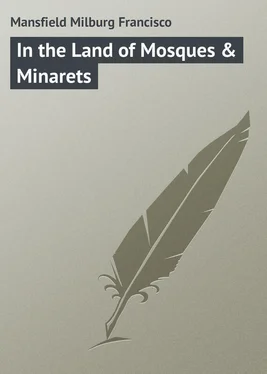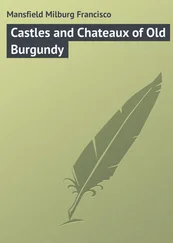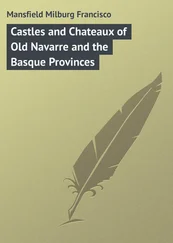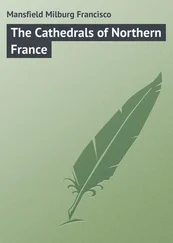Milburg Mansfield - In the Land of Mosques & Minarets
Здесь есть возможность читать онлайн «Milburg Mansfield - In the Land of Mosques & Minarets» — ознакомительный отрывок электронной книги совершенно бесплатно, а после прочтения отрывка купить полную версию. В некоторых случаях можно слушать аудио, скачать через торрент в формате fb2 и присутствует краткое содержание. ISBN: , Жанр: foreign_prose, Путешествия и география, на английском языке. Описание произведения, (предисловие) а так же отзывы посетителей доступны на портале библиотеки ЛибКат.
- Название:In the Land of Mosques & Minarets
- Автор:
- Жанр:
- Год:неизвестен
- ISBN:http://www.gutenberg.org/ebooks/46705
- Рейтинг книги:5 / 5. Голосов: 1
-
Избранное:Добавить в избранное
- Отзывы:
-
Ваша оценка:
- 100
- 1
- 2
- 3
- 4
- 5
In the Land of Mosques & Minarets: краткое содержание, описание и аннотация
Предлагаем к чтению аннотацию, описание, краткое содержание или предисловие (зависит от того, что написал сам автор книги «In the Land of Mosques & Minarets»). Если вы не нашли необходимую информацию о книге — напишите в комментариях, мы постараемся отыскать её.
In the Land of Mosques & Minarets — читать онлайн ознакомительный отрывок
Ниже представлен текст книги, разбитый по страницам. Система сохранения места последней прочитанной страницы, позволяет с удобством читать онлайн бесплатно книгу «In the Land of Mosques & Minarets», без необходимости каждый раз заново искать на чём Вы остановились. Поставьте закладку, и сможете в любой момент перейти на страницу, на которой закончили чтение.
Интервал:
Закладка:
At the western extremity of the Mitidja commence the orange-groves of Blida, the forests of olive-trees, and the eucalyptus of La Trappe. The scene is immensely varied and suggestive of untold wealth and prosperity at every kilometre.
Suburban Algiers is thickly built with villas, more or less after the Moorish style, but owned by Europeans. Recently the wealthy Arab has taken to building his “country house” on similar gracious lines; and, when he does, he keeps pretty near to accepted Moorish elements and details, whereas the European, the colon , or the commerçant grown rich, carries out his idea on the Meudon or St. Cloud plan. The Moorish part is all there, but the thing often doesn’t hang together.
To the eastward back of the mountains of Kabylie lies the great plateau region of the Tell.
The Tell is a region vastly different in manners and customs from either the desert or the Algerian littoral. The manners of the nomad of the Sahara here blend into those of the farming peasant; but, by the time Batna is reached, they become tainted with the commercialism of the outside world. At Constantine there is much European influence at work, and at the seacoast towns of Bona or Philippeville the Oriental perfume of the date-palm is lost in that of the smells and cosmopolitanism usually associated with great seaports. These four distinct characteristics mark four distinct regions of the Numidia of the ancients, to-day the wheat-growing region of the Tell.
The principal mountain peaks in Algeria rise to no great heights. Touabet, near Tlemcen, is 1,620 metres in height; the highest peak of the Grand Kabylie Range, in the province of Alger, is 2,308 metres; and Chelia, in Constantine, 2,328 metres. They are not bold, rugged mountains, but rolling, rounded crests, often destitute of verdure to the point of desolation.
The development of the regions forming the hinterland – practically one may so call the Sahara – is of constant and assiduous care to the authorities. They have done much and are doing much more as statistics indicate.
In the valley of the Oued-Righ and the Ziban, one of the most favoured of these borderlands, the government statistics of springs and oases are as follows (1880-90): —

And as the population increases and fruit-growing areas are further developed, the military engineers come along and dig more wells.
The following average temperatures and rainfall show the contrast between various regions: —

It will be noted that, normally, there is very little difference in temperature, and a very considerable difference in rainfall.
The extreme recorded winter temperatures are as follows: —

Algeria has something like 3,100 kilometres of standard gauge railway, and various light railways, or narrow gauge roads, of from ten to fifty kilometres in length, aggregating perhaps five hundred kilometres more. Railway building and development is going on constantly, but they don’t yet know what an express train is, and the sleeping and dining car services are almost as bad as they are in England. The real up-to-date sleeping-car has electric lights and hot and cold water as well as steam heat. They have dreamed of none of these things yet in England or Africa.
The railway is the chief civilizing developer of a country. The railway receipts in Algeria in 1870 were 2,500,000 francs. In 1900 they were 26,000,000 francs. That’s an increase of a thousand per cent., and it all came out of the country.
The “Routes Nationales” of Algeria (not counting by-roads, etc.), the real arteries of the life-blood of the country, at the same periods numbered almost an equal extent, and they are still being built. Give a new country good roads and good railways and it is bound to prosper.
Four millions of the total population of Algeria (including something over two hundred thousand Europeans) are dependent upon agriculture for their livelihood. Wheat, wine and tobacco rank in importance in the order named.
The growth of the wine industry has been most remarkable.

None of it is sold as Bordeaux or Burgundy, at least not by the Algerian grower or dealer. It is quite good enough to sell on its own merits. Let Australia, then, fabricate so-called “Burgundy” and Germany “Champagne” – Algeria has no need for any of these wiles.
Grapes, figs and plums are seemingly better in Algeria than elsewhere. Not better, perhaps, but they are so abundant that one eats only of the best. The rest are exported to England and Germany. The little mandarin oranges from Blida and about there, are one of the stand-bys of Algerian trade. So are olives and dates.
CHAPTER IV
THE RÉGENCE OF TUNISIA AND THE TUNISIANS
FOR twenty years France has been putting forth her best efforts and energies into the development of Tunisia, to make it a worthy and helpful sister to Algeria. From a French population of seven hundred at the time of the occupation in 1882, the number has risen to fifty thousand.
Tunisia of to-day was the Lybia of the ancients; but whether it was peopled originally from Spain, from Egypt or from peoples from the south, history is silent, or at least is not convincingly loud-voiced.
Lybian, Punic, Roman, Vandal and Byzantine, the country became in turn, then Mussulman; for the native Tunisian has not yet become French. The Bey still reigns, though with a shorn fragment of his former powers. The Bey is still the titular head of his Régence, but the French Résident Général is really the premier fonctionnaire , as also he is the Bey’s Ministère des Affaires Étrangères.
The ancient governmental organization of the Bey has been retained with respect to interior affairs. The Caïds are the local governors or administrators of the territorial divisions and are appointed by the Bey himself. They are charged with the policing of their districts, the collecting of taxes, and are vested with a certain military authority with which to impress their tribes. Associated with the Caïds, as seconds in command, are a class called Khalifas, and as tax collectors, mere civil authorities, there are finally the Sheiks.
It was a bitter pill for Italy when France took the ascendancy in Tunis. The population of the city of Tunis to-day still figures 30,000 Italians and Maltese as against 10,000 French, – and ever have the French anti-expansionists called it a “ chinoiserie .” Call it what you will, Tunis, in spite of its preponderant Italian influence, is fast becoming French. It is also becoming prosperous, which is the chief end of man’s existence. This proves France’s intervention to have been a good thing, in spite of the fact that it accounts for seventy-five per cent. of the Italian’s animosity towards his Gallic sister.
The death of S. A. Saddok-Bey in 1882, by which the Tunisian sovereign became subservient to the French Resident, was an event which caused some apprehension in France.
The new ruler, Si-Ali-Bey, embraced gladly the French suzerainty in his land that his sons might see the institutions of the Régence prosper under the benign guidance of a world power. Ali-Bey resisted nothing French, – even as a Prince, – and when he came to the Beylicale throne in 1882 he gave no thought whatever to the ultimate political independence of his country. He was ever, until his death, the faithful, liberal coöperator with the succession of Résidents Généreaux who superseded him in the control of the real destinies of Tunisia.
Читать дальшеИнтервал:
Закладка:
Похожие книги на «In the Land of Mosques & Minarets»
Представляем Вашему вниманию похожие книги на «In the Land of Mosques & Minarets» списком для выбора. Мы отобрали схожую по названию и смыслу литературу в надежде предоставить читателям больше вариантов отыскать новые, интересные, ещё непрочитанные произведения.
Обсуждение, отзывы о книге «In the Land of Mosques & Minarets» и просто собственные мнения читателей. Оставьте ваши комментарии, напишите, что Вы думаете о произведении, его смысле или главных героях. Укажите что конкретно понравилось, а что нет, и почему Вы так считаете.












